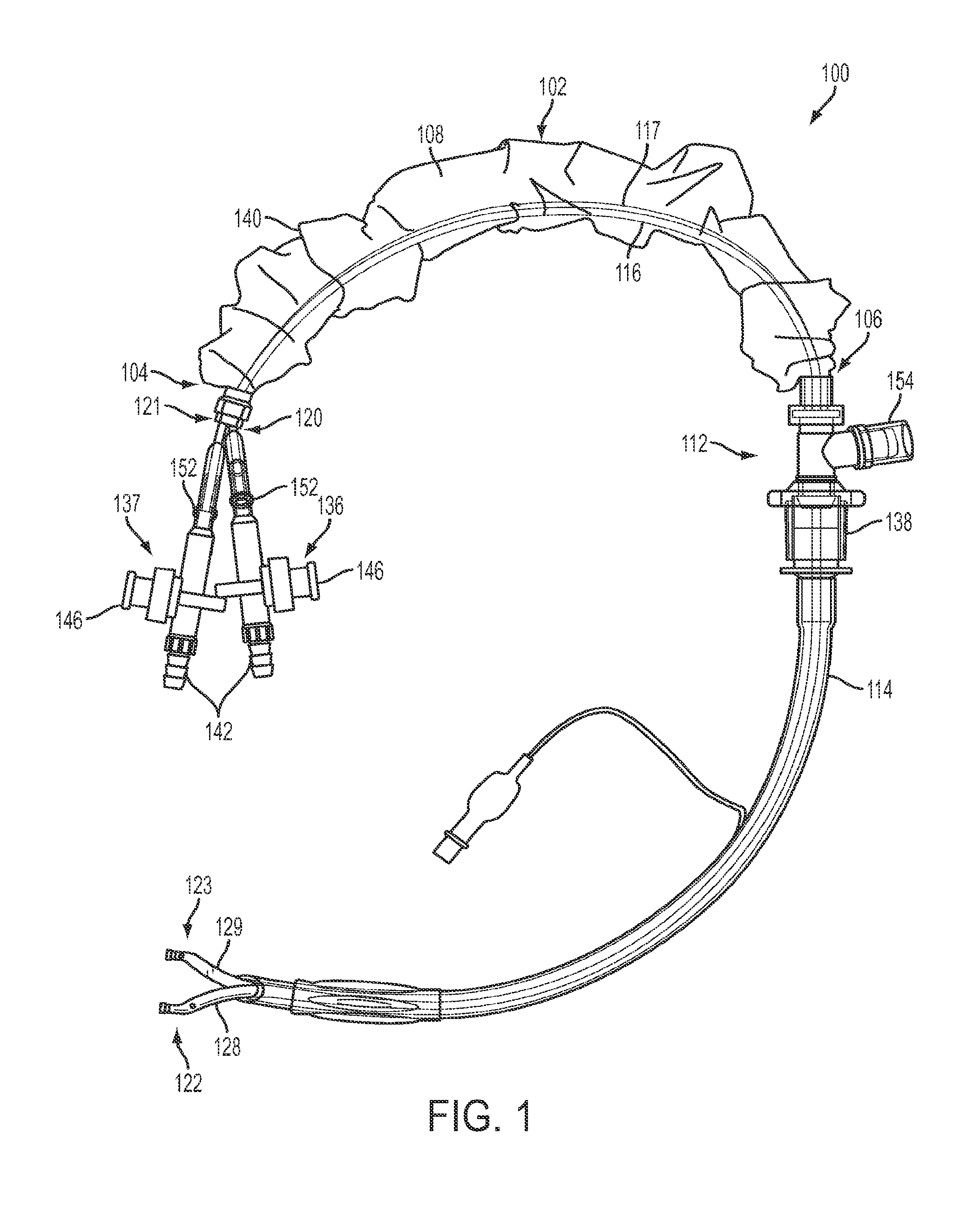Aspiration catheters, systems, and methods
a technology of catheters and catheter tubes, applied in the field of medical devices, can solve the problems of contaminated catheters, limited reservoirs, and contamination of sleeves
- Summary
- Abstract
- Description
- Claims
- Application Information
AI Technical Summary
Benefits of technology
Problems solved by technology
Method used
Image
Examples
Embodiment Construction
[0092]Systems and methods are provided for positioning and using a catheter within a body lumen of a patient (e.g., the left and right main bronchi), without requiring direct visualization. The system may allow the desired placement of a working catheter within either bronchus without using endoscopy to assure placement.
[0093]The catheters, systems, and methods can be utilized in various applications to suction and / or remove material, such as respiratory secretions from the airways. The catheters, systems, and methods can also be utilized for irrigation, alone, or in combination with aspiration. The catheters, systems, and methods can be used for treating and / or preventing conditions requiring aspiration and / or irrigation, including any type of respiratory conditions. Such respiratory conditions can include pneumonia or bronchitis, for example, and prevention or treatment, for example.
[0094]The system and methods may include various implementations, examples of which are described h...
PUM
 Login to View More
Login to View More Abstract
Description
Claims
Application Information
 Login to View More
Login to View More - R&D
- Intellectual Property
- Life Sciences
- Materials
- Tech Scout
- Unparalleled Data Quality
- Higher Quality Content
- 60% Fewer Hallucinations
Browse by: Latest US Patents, China's latest patents, Technical Efficacy Thesaurus, Application Domain, Technology Topic, Popular Technical Reports.
© 2025 PatSnap. All rights reserved.Legal|Privacy policy|Modern Slavery Act Transparency Statement|Sitemap|About US| Contact US: help@patsnap.com



